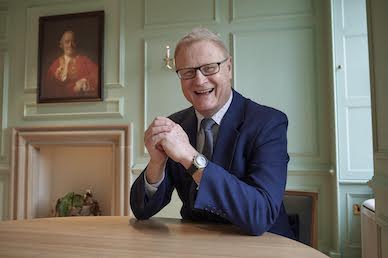The Scottish National Investment Bank said on Monday its fast rate of growth “will slow in the year ahead due to reduced availability of capital.”
The bank — an “impact” investor — said it expects its income for the financial year 2023-2024 will exceed its operational expenses, on an accounting basis, for the first time.
In its 2024-45 Business Plan launched on Monday the bank said: “From launch to the end of March 2024 we have committed £640 million of investment in support of our missions, £225 million of which was in the last financial year alone.
“The £640 million we have committed has also enabled more than £1 billion to be invested alongside the Bank, accelerating both economic growth and progress towards delivering our missions …
“The amount of investment we have committed and deployed has increased year-on-year since launch, with associated increases in income.
“While the rate of this growth will slow in the year ahead due to reduced availability of capital, our growth will still continue to move us closer to full financial self-sustainability.
“For the Financial Year 2023-2024 (FY23/24) it is anticipated that our income will exceed our operational expenses (on an accounting basis) for the first time.”
The Scottish Government has committed to capitalising the bank with £2 billion in its first 10 years.
The bank said on Monday that over the longer term “significant investment from private sector capital is needed” if it is to meet its missions — and it will “seek to manage private sector capital alongside the public funds entrusted to us.”
The bank said it is exploring “ways in which we might be able to support this mobilisation of capital” and this may include options such as advising on the investments of third parties in structures like segregated mandates or funds.
“We aspire to become a permanent, growing, investment fund for Scotland,” said the bank.
“To achieve this, we need to ensure that the income we earn from our investment activities more than cover our costs, which will mean that we no longer require financial support from Scottish Ministers for our operational expenditure.
“Surplus income and returns from investment capital can then be re-invested, ultimately enabling us to grow the funds we invest beyond the £2 billion of capital committed by Scottish Ministers. The budget allocation for the year ahead, FY24/25, is clearly in the context of challenging public sector finances.
“However, future settlements can ensure that we avoid the risk that we are unable to deploy £2 billion commitment over 10 years. Without this commitment, we acknowledge challenges to the bank achieving self-sustainability.”
The bank’s chair Willie Watt said: “I am very aware that the ambitions contained within this plan will be delivered against an environment with economic headwinds, and in which there are increasing challenges for those businesses seeking to raise capital, so the role of the bank is even more crucial.
“This plan also reflects our investment budget settlement from the Scottish Government, which was lower than we forecast last year, but represents a significant commitment on the part of the government given the constraints to public investment that they have.”
The bank’s CEO Al Denholm said: “I am acutely aware of the pressures on the public finances and the challenge this presents for the financial year ahead.
“The amount of funds available to deploy is lower than in the current year – the first time this has been the case.
“In our Business Plan last year, we anticipated an investment budget for FY24/25 of £250 million. In the Scottish Government budget announcements made in December, the budget available for us to invest was £181 million.
“This does represent almost 100% of the new ‘Financial Transaction’ funding available (a specific designation of funds for public sector commercial investment) and I am very grateful to the Government for this clear demonstration of confidence in us …
“Throughout this plan our ambition and strategy for the medium-longer term remain the same. However, we will clearly need to be more focused for the year ahead, and this plan sets out our specific targets and priorities for FY24/25.
“This will ensure our capital is deployed to maximum effect, while acknowledging that our impact for the year ahead will be lower than it might have been due to these capital constraints. Over the longer-term, significant investment from private sector capital is needed if we are to meet our missions.
“The bank cannot deliver its missions alone. So, in the years ahead we seek to manage private sector capital alongside the public funds entrusted to us. Having worked in private sector investment management for many years I know that access to this capital will require both differentiation and demonstrable expertise. The bank’s role as an impact investor at the heart of the Scottish financial ecosystem provides this point of differentiation.
“Our growing experience and networks in areas of critical economic opportunity, such as the offshore wind supply-chain, demonstrate our unique expertise.
“Several market-leading institutional investors have made commitments to invest more of their funds directly in smaller British businesses, in part to support economic growth and in part to gain greater exposure to scaling businesses.
“This coincides with the Bank reaching a critical point of maturity, helping to enable these investors to access the growth potential of private direct investment in scaling small and medium-sized enterprises.
“We are already exploring a range of ways in which we might be able to support this mobilisation of capital. This may include options such as advising on the investments of third parties in structures like segregated mandates or funds. I see this as a crucial area of priority for the Bank in the year ahead and beyond.”
